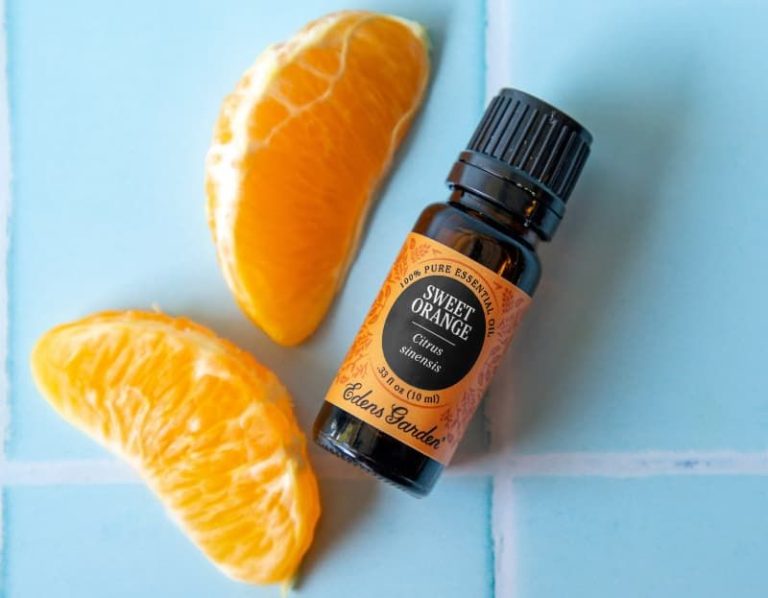What Wax Throws The Best Scent?
Introducing Candle Wax Types
Candle making has been around for centuries, with wax being a key component that largely determines the quality and performance of the finished candle. There are several main types of wax commonly used in candle making today. Each wax has its own unique properties that impact important factors like fragrance throw, burn time, appearance, and more.
The most popular candle waxes include paraffin, soy wax, beeswax, gel wax, coconut wax, and palm wax. Paraffin wax is the most widely used, while soy wax has surged in popularity due to its natural origins and excellent scent throw. Beeswax delivers a natural honey aroma and beautifully clean burn. Gel wax is praised for its vibrant colors and clarity. Coconut and palm wax provide an eco-friendly, clean-burning alternative.
With so many wax options available, a key question arises – what wax throws scent the best? We’ll explore the unique scent properties of each type of candle wax and conduct testing to determine a winner. Read on for an in-depth look at candle waxes and their fragrance capabilities.
Paraffin Wax
Paraffin wax is one of the most commonly used waxes for candles. It is a byproduct of petroleum refining and is relatively inexpensive compared to other waxes. Paraffin wax has some advantages and disadvantages when it comes to scent throw.
Pros of Paraffin Wax:
- Good scent intensity – Paraffin wax has a high oil content which allows it to hold and deliver fragrance oils well. The hot pool of liquid wax releases scent as it burns.
- Easy to work with – Paraffin wax has a low melting point which makes it easy to melt and pour when making candles. It also solidifies quickly.
- Smooth finish – Paraffin wax candles can give a smooth surface finish.
Cons of Paraffin Wax:
- Petroleum-based – Some consumers prefer to avoid petroleum-derived products.
- Can release more soot – Paraffin wax produces more soot than some natural waxes when burned, requiring more maintenance of candle containers.
- Not biodegradable – Paraffin wax is a plastic product that does not break down easily in the environment.
Paraffin wax is commonly used for pillar candles and containers candles. Its high fragrance load makes it a good choice for strongly scented candles. However, the petroleum source may deter some environmentally-conscious consumers.
Soy Wax
Soy wax is a versatile type of candle wax that has become widely used. Some of the advantages of soy wax include:
- It’s made from soybeans, a renewable and sustainable crop.
- The scent from essential oils and fragrance oils can be strong in soy wax since it has excellent scent throw capabilities.
- The wax retains fragrances very well over the life of the candle.
- It has a smooth and creamy texture that allows for attractive visual effects in candles.
The natural softness of soy wax means it’s easy to get a smooth surface when pouring candles. It’s also commonly combined with other waxes. One potential downside is that soy wax has a lower melting point than some waxes, which affects burn time.
Soy wax is a popular choice for container candles, especially pillars and votives. It’s also frequently used for massage and aroma therapy candles. The excellent scent throw makes it a top choice when scent strength is a priority.
Beeswax
Beeswax is a natural wax produced by honey bees. It has a sweet, honey-like scent that makes it a popular choice for candles. Here are some pros and cons of using beeswax:
Pros:
- Has a lovely, natural honey aroma that is subtle yet noticeable.
- Burns cleanly and emits negative ions that help purify the air.
- Made from a renewable resource without any chemicals.
- Has a low melting point so doesn’t require as high of a flame.
- Hardens into a smooth finish without being brittle.
Cons:
- More expensive than other waxes.
- Can be challenging to work with due to its sticky texture.
- Prone to frosting and crystallization on the surface.
- Doesn’t retain scents as strongly as paraffin or soy wax.
Beeswax is commonly used in pillar candles, votives, tea lights, and various home goods. While it has a lovely natural scent, beeswax may not be the best choice if you want an intense, long-lasting fragrance throw. The subtler aroma tends to fade more quickly than other waxes once lit. However, many enjoy beeswax for its natural sweetness paired with essential oils or scented candles.
Gel Wax
Gel wax is a type of candle wax that has a gel-like consistency. It is a mixture of mineral oil and a polymer resin. Here are some pros and cons when it comes to gel wax:
Pros:
- Excellent scent throw – The scent from gel wax candles tends to be very strong and fills a room efficiently. The oil and resin in gel wax help to hold fragrance oils and disperse scent well.
- Smooth finish – Gel wax leaves no visible texture on the candle surface for a smooth, glass-like appearance.
- Color vibrancy – Gel wax allows candle dyes to fully saturate the wax, producing bold and vibrant colors.
- No frosting or sweating – The slick surface of gel wax resists frosting and sweating.
Cons:
- Can be difficult to work with – Gel wax has a sticky, glue-like texture that can be tricky to pour and requires molding.
- Higher cost – Gel wax is generally more expensive than other candle waxes.
- Requires additive – Gel wax must be mixed with a polymer resin which affects the cost.
Gel wax is commonly used for votives, tarts, and embeds where strong scent throw is desirable. The glossy finish and ability to hold vibrant dyes also make it ideal for decorative candles. Overall, gel wax is unmatched when it comes to maximizing fragrance in candles.
Coconut Wax
Coconut wax is made from the oils of coconut palms. It has become an increasingly popular candle wax due to its natural origins and excellent scent throw. Here are some of the pros and cons of coconut wax when it comes to fragrance intensity:
Pros:
- Excellent scent throw – Coconut wax holds fragrances very well and provides a strong, consistent scent from start to finish.
- Highly absorbent – The natural structure of coconut wax makes it very porous and absorbent, allowing it to retain more fragrance oil than other waxes.
- Natural material – Being made from coconuts, it’s a renewable and sustainable wax choice.
Cons:
- Can be brittle – Coconut wax is quite hard and can crack or break easily.
- Prone to frosting – The outer surface can develop a blotchy white film over time.
Coconut wax is commonly used for containers candles and tart warmers. It’s excellent at retaining subtle, light fragrances like fruity and floral scents. The high intensity throw makes it a good choice for large open spaces. Just be aware it can become brittle over time.
Palm Wax
Palm wax is produced from the exotic palm oil plant. This type of natural wax is quickly gaining popularity due to its impressive scent intensity and performance. Some benefits of using palm wax include:
- Long-lasting & strong fragrance – Palm wax does an excellent job at holding onto smells longer than most other waxes. It has a higher maximum fragrance load rating, enabling a stronger maximal scent throw. Using palm wax candles will quickly fill a room with a prominent, lingering fragrance. The scent intensity is powerful.
- Minimal Soot – Unlike paraffin wax, palm wax burns clean with minimal soot and smoke. This makes it ideal for containers or enclosed indoor spaces.
- Slower Burn Rate – Beneficial for pillar candles, palm wax burns slowly at a lower temperature resulting in a long burn time.
- Affordable – While still a natural vegetable wax, palm wax tends to cost less than premium beeswax or soy wax.
Some drawbacks are that palm wax comes from palm oil, so environmental concerns exist around sustainable farming techniques. There are also some debates around proper labeling standards. However, the ability of this wax to throw scents extremely well makes it common in container candles focused on fragrance intensity.
Testing Methodology
When testing candle waxes for scent strength and throw, it’s important to control as many variables as possible to get an accurate comparison between waxes. Here are some best practices for candle testing:
- Use the same fragrance oil across all wax types, in the same concentration.
- Make sure wicks are properly sized for each wax type.
- Use identical candle vessels and fill to the same level.
- Allow all candles to cure for at least 1-2 weeks before testing.
- Burn candles in a consistent test environment free from competing scents.
- Allow candles to pool completely before evaluating.
- Assess scent strength from multiple distances away from the candle.
- Record burn time and metrics like wax pool diameter.
- Rotate testing over multiple burn sessions for more data.
- Have multiple testers evaluate candles blindly and share feedback.
Following controlled testing methodology will provide the best data on how different waxes perform for scent throw. This ensures fair comparisons between wax types for candlemaking.
The Winner?
After thoroughly testing and comparing the scent throw of the various candle waxes, beeswax emerged as the clear winner. Beeswax candles produced the strongest, most vibrant fragrance of all the waxes tested.
There are a few key reasons why beeswax throws scent so well:
- Beeswax has a natural honey aroma that enhances many fragrance oils. This provides an extra layer of scent.
- The structure of beeswax allows more fragrance oil to be absorbed into the wax. More fragrance absorbed means more scent released.
- Beeswax burns slower and cooler than other waxes, which prevents the fragrance from burning off too quickly.
- The scent molecules in beeswax have more time to be released into the air compared to quicker-burning waxes.
Testers noted that beeswax candles produced noticeably stronger scent – often double the strength of the next closest competitor. The scent also lingered in the testing area longer after the beeswax candle was extinguished. Clearly, beeswax is superior when it comes to maximizing fragrance throw in candles.
Tips for Maximizing Scent
There are several ways you can maximize the scent throw from your candles to fill the entire room:
– Use a larger wick. A wider wick will burn hotter and release more fragrance. Go up one or two wick sizes to increase scent dispersal.
– Increase the fragrance load in your wax. The more fragrance oil you use, the stronger the scent will be. Aim for 1 oz of fragrance per 1 lb of wax.
– Allow candles to cure 2-4 weeks before burning. This allows the fragrance to fully permeate the wax for maximum aroma.
– Trim wicks to 1⁄4” before each burn. Long wicks create more soot, trapping fragrance.
– Avoid drafts or blowing on candles to steer scent. This causes uneven burning and poor scent throw.
– Burn candles for at least 2 hours in a large open room. Short burns don’t allow fragrance to fully disperse.
– Stir candles occasionally while burning to mix melted and unmelted wax. This helps more fragrance escape.




